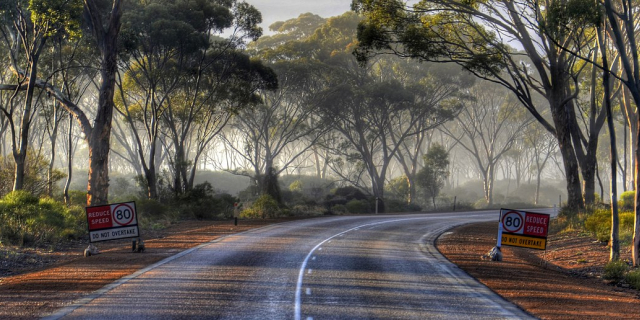Bondi Beach is a popular beach and the name of the surrounding suburb in Sydney, New South Wales, Australia. Bondi Beach is located 7 kilometres (4 miles) east of the Sydney central business district, in the local government area of Waverley Council, in the Eastern Suburbs. It has a population of 11,656 residents. Its postcode is 2026. Bondi, North Bondi and Bondi Junction are neighbouring suburbs. Bondi Beach is one of the most visited tourist sites in Australia sparking two hit TV series Bondi Rescue and Bondi Vet.
 Bondi Beach, Vicar's Estate Auction, 1923, subdivision plan
Bondi Beach, Vicar's Estate Auction, 1923, subdivision plan"Bondi," originally "Boondi" is an Aboriginal word which has the same meaning as the word "surf" in English. The first record of "bondi" by European-ancestry Australians was made between 1899 and 1903. It describes the meaning as "noise made by sea waves breaking on the beach,"[1] which is essentially the definition of "surf" in contemporary American English.[2] The Australian Museum records that Bondi means place where a fight using bondi sticks (nulla nullas or fighting sticks) took place.
In 1809 the road builder William Roberts received a grant of land in the area.[3][4] In 1851 Edward Smith Hall and Francis O'Brien purchased 200 acres (0.8 square kilometres) of the Bondi area that included most of the beach frontage, which was named "The Bondi Estate." Hall was O'Brien's father-in-law. Between 1855 and 1877 O'Brien purchased his father-in-law's share of the land, renamed the land the "O'Brien Estate," and made the beach and the surrounding land available to the public as a picnic ground and amusement resort. As the beach became increasingly popular, O'Brien threatened to stop public beach access. However, the Municipal Council believed that the Government needed to intervene to make the beach a public reserve. In mid-1882, Bondi Beach became a public beach.[5] The first tramway to the beach was established in 1884. The Waverley Council was responsible for building the first surf bathing sheds on the beach in 1903. By 1929 an estimated 60,000 people were visiting the beach on a summer weekend day. The opening of the pavilion in the same year attracted a huge crowd of 200,000.[6]
 'Bondi Bay' - a photo from circa 1900 from The Powerhouse Museum
'Bondi Bay' - a photo from circa 1900 from The Powerhouse MuseumOn 6 February 1938 five people drowned and over 250 people were rescued or resuscitated after a series of large waves struck the beach and pulled people back into the sea, a day that became known as "Black Sunday".[7]
Bondi Beach was a working class suburb throughout most of the twentieth century with migrant people from New Zealand comprising the majority of the local population. Following World War II, Bondi Beach and the Eastern Suburbs became home for Jewish migrants from Poland, Russia, Hungary, Czechoslovakia and Germany. A stream of Jewish immigration continued into the 21st century and the area has a number of synagogues and a kosher butcher. The multicultural migration funded and drove the growth of the suburb throughout the 1990s into the turn of the century,[8] moving it steadily from its working-class roots towards an upper/middle-class enclave[9] similar to its neighbours of Rose Bay and Bellevue Hill which was listed as the most expensive postcode in the country from 2003 to 2005.[10][11]
Bondi Beach was long a centre for efforts to fight indecency in beach attire. The beach was a focal point of the 1907 Sydney bathing costume protests, organized to oppose proposed dress standards for beachgoers. The Local Government Act, Ordinance No. 52 (1935)[12] governed the decency of swimming costumes and was in force between 1935 and 1961, and resulted in public controversy as the two-piece "bikini" became popular after World War II. Waverley Council's beach inspectors, including the Aub Laidlaw, were responsible for enforcing the law and were required to measure the dimensions of swimwear and order offenders against public decency off the beach. While vacationing in Australia during 1951, American movie actress Jean Parker made international headlines when she was escorted off the beach after Laidlaw determined her bikini was too skimpy.[13] The rule became increasingly anachronistic during the 1950s and was replaced in 1961 with one requiring bathers be "clad in a proper and adequate bathing costume", allowing for more subjective judgement of decency. By the 1980s topless bathing had become common at Bondi Beach, especially at the southern end.[14]
Sydney's Water Board maintained an untreated sewage outlet not far from the north end of the beach until the 1960s when a sewage treatment plant was built. In the mid-1990s the plant was upgraded & a deepwater ocean outfall was completed to meet water quality standards.
In March 2007, Waverley Council started proceedings to evict a hermit who was living in squalor on a cliff overlooking the beach. Peter James Paul Millhouse, calling himself Jhyimy "Two Hats" Mhiyles, came to the beach during the 2000 Sydney Olympic Games and became a local celebrity for his lifestyle and poetry recitals to visitors. Residents and tourists put together a "save the caveman" petition to allow him to continue residing but under certain rules.[15][16] In 2009, he was arrested and charged for the rape of a tourist.[17] While he was in custody, Waverley Council under then-mayor Liberal Sally Betts removed his belongings from the cliff.[18] In September 2011, charges against Jhyimy were dropped by the Director of Public Prosecutions over concerns of the reliability of the witness.[19] Waverley Council has not offered recompense for his eviction from his home or loss of belongings.
In March 2020, the Government of New South Wales closed Bondi Beach after a number of people there exceeded Australia's outdoor-gathering limit imposed to slow the spread of the coronavirus in New South Wales.[20]


































Add new comment